Five little-known facts about the legendary "Katyusha"
The combat vehicle of rocket artillery BM-13 is much better known by the legendary name "Katyusha". And, as is the case with any legend, its history over the decades has not just been mythologized, but has been reduced to a small number of well-known facts. What does everyone know? That "Katyusha" was the most famous rocket artillery system of the Second World War. That the commander of the first separate experimental battery of field rocket artillery was Captain Ivan Flerov. And that the first strike of his installation was inflicted on 14 July 1941 of the year by Orsha, although some historians of Russian artillery dispute this date, arguing that the Fleurov battery contains an error in the battle log, and Orsha was fired on July 13.
Perhaps the cause of the mythologization of the “Katyusha” was not only the ideological tendencies inherent in the USSR. The banal lack of facts could also play its role: domestic rocket artillery always existed in an atmosphere of strict secrecy. Here is a typical example: the well-known geopolitician Vladimir Dergachev writes in the memoirs of his father, who served in the Guards Mortar Regiment, that his “military unit was disguised as a cavalry regiment, which is reflected in the photographs of his father and colleagues in Moscow. Field censorship in the conditions of censorship allowed sending these photos to relatives and beloved women. ” The newest Soviet weapon, the decision on the mass production of which the USSR government took late June 21 on June 1941, belonged to the category of “special security equipment” - the same as all encryption tools and secure communication systems. For the same reason, for a long time each installation of the BM-13 was supplied with an individual device for undermining in order to prevent them from falling into the hands of the enemy.
However, turning into a myth, which today needs to very accurately and respectfully return real features, has not been avoided by any sample of the famous Soviet weapons of the Great Patriotic War: neither the T-34 tank and the Shpagin submachine gun, nor the ZIS-3 division gun ... Meanwhile in their real history, which is much less known, as in the history of "Katyusha", there are enough truly legendary events and facts. Some of them today and tells the "historian".
Guards mortar units appeared before the entire Soviet Guard
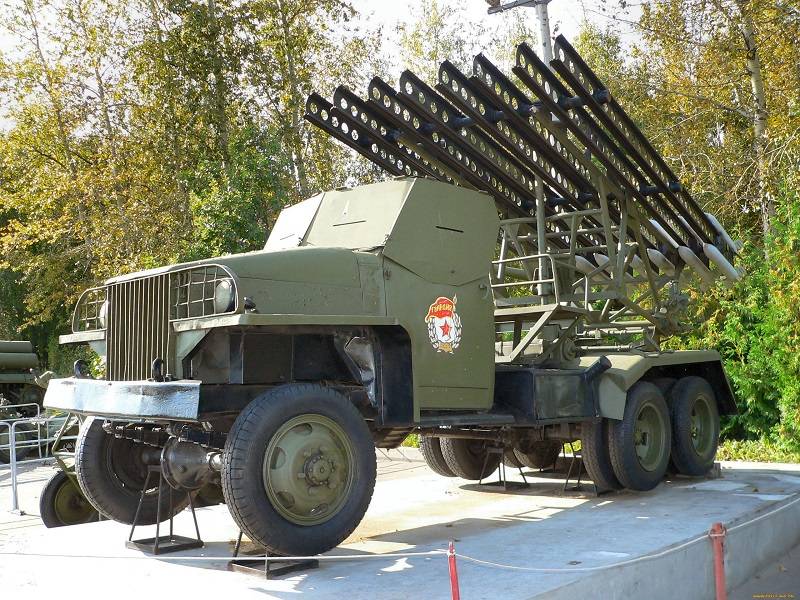
Guards mortar BM-13 on Studebaker chassis US6 with Guards badge, approved in 1942 year
The formal date for the appearance of Guards units in the Red Army was 18 September 1941, when, by order of the USSR People's Commissar of Defense, four rifle divisions "for combat exploits, organization, discipline and exemplary order" were given the title of Guards. But by that time more than a month all units of rocket artillery, without exception, had been called Guards, and they received this title not as a result of battles, but during formation!
For the first time the word “Guards” appears in official Soviet documents 4 of August 1941 of the year - in the resolution of the USSR State Committee of Defense No. GKO-383ss “On the formation of one Guards mortar regiment M-13”. This is how the document begins: “The State Defense Committee decides: 1. To agree with the proposal of the People's Commissar of the General Machine-Building of the USSR SS. Parshin to form one Guards mortar regiment armed with M-13 installations. 2. Assign the name of the People's Commissariat of General Mechanical Engineering (Petr Parshin. - Comm. Aut.) To the newly formed Guards Regiment ”.
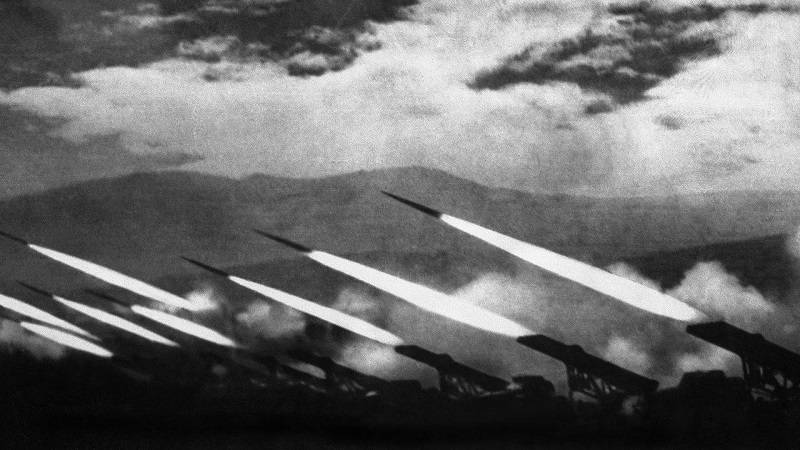
The salvo of the “Katyush” division - BM-13 combat vehicles on the chassis of the Studebaker car US6, spring 1945 of the year
Four days later, on August 8, on the orders of the High Command Headquarters (UGHK) No. 04, eight more Guards mortar regiments were formed in Alabin camps near Moscow. Half of them - from the first to the fourth - received for the installation of the BM-13, and the rest - BM-8, equipped with missiles 82 caliber mm.
And one more interesting moment. By the end of the autumn, 1941 Guards mortar regiments were already operating on the Soviet-German front on the Soviet-German front, but only at the end of January on 14 did their soldiers and commanders equalize in cash with the personnel of the “ordinary” Guards units. The Supreme Command Order No. 1942 “On the monetary allowance for the personnel of the Guards mortar units” was adopted only on January 066 and read: “It is a one-and-a-half to install the commander (senior, senior, middle and junior) of the Guards mortar units from 25 in January 1. double salary of content, as established for Guards units. ”
The most massive chassis for the "Katyusha" were American trucks.
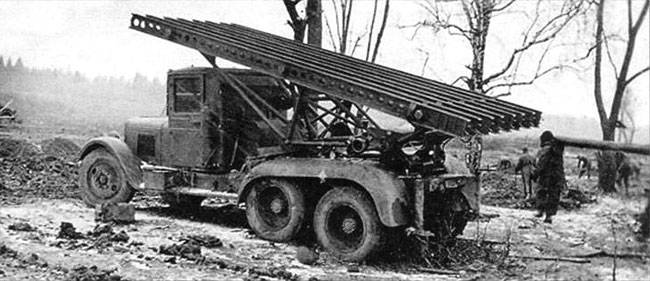
Preparation of the BM-13 installation on the chassis of the ZIS-6 car for shooting, winter 1942 of the year
Most of the surviving installations of the BM-13, standing on pedestals or becoming museum pieces, are “Katyushas” based on a three-axle ZIS-6 truck. One cannot help thinking that it was such combat vehicles that went through the glorious battle path from Orsha to Berlin. Although, no matter how much we would like to believe in it, the story suggests that most of the BM-13 were equipped on the basis of the Lend-Lease's Studebakers.
The reason is simple: the Moscow Stalin Automobile Plant simply did not have time to produce a sufficient number of cars until October 1941, when it was evacuated to four cities at once: Miass, Ulyanovsk, Chelyabinsk and Shadrinsk. At first, it was not possible to adjust the production of a three-axle model unusual for the plant at new places, and then it was completely abandoned in favor of more developed ones. As a result, from June to October 1941 of the year only a few hundred installations were manufactured based on ZIS-6, which armed the first Guards mortar units. In open sources, a different number is given: from 372 combat vehicles (which looks like an understated figure) to 456 and even 593 installations. Perhaps this discrepancy in the data is due to the fact that the ZIS-6 was used for the construction not only of the BM-13, but also of the BM-8, and also because for this purpose the trucks were withdrawn from where they were found and they are either taken into account in number of new, or not.
Guards mortars BM-13 on Studebaker chassis US6 with a Guards badge at the Victory Parade 24 June 1945 of the year
However, the front needed more and more Katyushas, and they needed to be installed on something. Designers tried everything - from ZIS-5 trucks to tanks and railway platforms, but the most efficient were the three-axle cars. And then, in the spring of 1942, they decided to place launchers on the chassis of trucks supplied by Lend-Lease. The American Studebakers US6 are best suited - the same three-axle ones as the ZIS-6, but more powerful and passable. As a result, they accounted for more than half of all Katyushas - 54,7%!
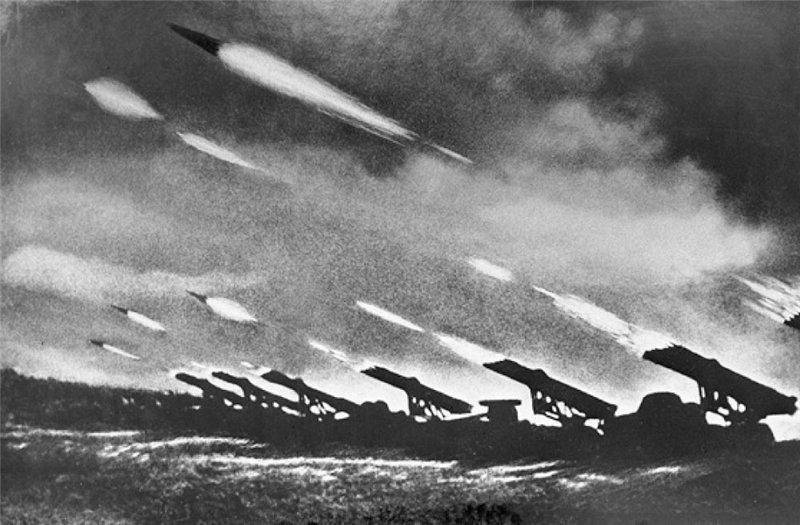
Volley of the BM-13 combat vehicle division during the Berlin operation, April 1945
The question remains: why were BM-13 based on ZIS-6 most often used as monuments? Many researchers of the Katyusha history are inclined to see this as an ideological background: they say, the Soviet government did everything so that the country would forget about the important role of the American auto industry in the fate of the famous weapons. True, in reality, everything is much simpler. Of the first "Katyushas", only a few units survived to the end of the war, and most of them ended up at production bases, which they got during the re-formation of units and the replacement of weapons. And the BM-13 units on the Studebaker players remained in service with the Soviet army even after the war, until the domestic industry created new cars. Then the launchers began to be removed from the American base and rearranged on the chassis first ZIS-151, and then ZIL-157 and even ZIL-131, and those who served "Studebakers" were transferred to the alteration or written off for scrap.
For jet mortars answered a separate Commissariat
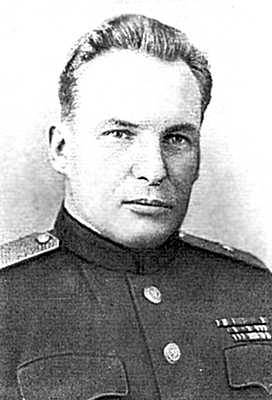
As already mentioned, the first Guards mortar regiment began to form 4 on July 1941 of the year on the initiative of the people's commissar of general engineering Peter Parshin. And after more than four months, the People's Commissariat, which was headed by this famous engineer-manager, was renamed and began to be responsible almost exclusively for providing the equipment of the Guards mortar units. 26 November 1941 of the Year The Presidium of the Supreme Soviet of the USSR issued a decree saying: “1. To convert the People's Commissariat of General Machinery to the People's Commissariat of mortar weapons. 2. To appoint People’s Commissar of Mortar Weapons Comrade Parshin Peter Ivanovich ”. Thus, the Guards mortar units became the only type of armed forces in the Red Army that had their own ministry: it was no secret for anyone that “Katyusha” was understood as “mortar armament”, although this people's commissariat produced all mortars too much.
By the way, it is remarkable: that very first Guards mortar regiment, whose formation began on August 4, received the number 9 four days later - simply because by the time the order was issued there was no number at all. The 9 Guards Mortar Regiment was formed and armed on the initiative and at the expense of the workers of the General Machinery Commissariat — the future Commissariat of mortar weapons, and received equipment and ammunition from those produced in August above the plan. And the Commissariat itself existed until February 17 1946, after which it turned into the USSR Commissariat of Mechanical Engineering and Instrumentation - under the guidance of the same permanent Peter Parshin.
The commander of the guards mortar units became lieutenant colonel
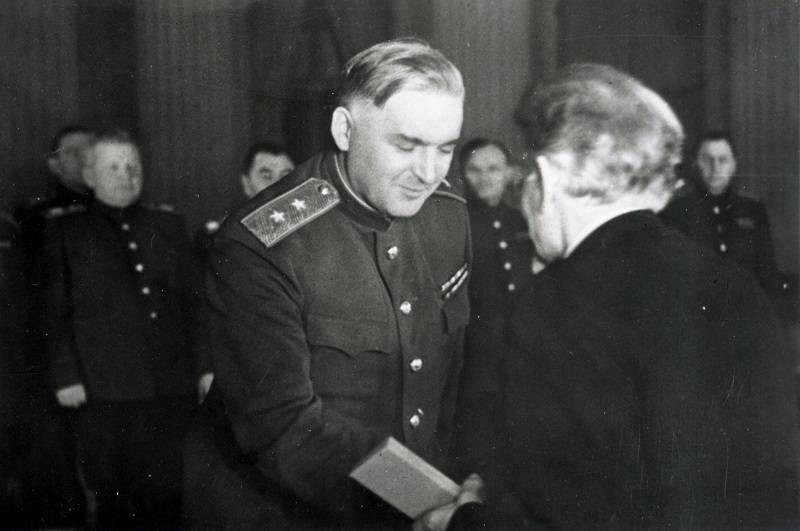
Vasily Aborenkov receives the Stalin Prize for participation in the development and launch of the Katyusha, 1943 year
September 8 1941 - a month after the order to create the first eight Guards mortar regiments - a decree of the State Committee of Defense No. GKO-642ss was issued. This document signed by Joseph Stalin guards mortar units separated from the artillery of the Red Army, and to manage them introduced the post of commander of the mortar units with the direct subordination of his headquarters. Vasily Aborenkov, deputy chief of the Main Artillery Directorate of the Red Army, was appointed a military engineer of rank 1, that is, in fact, an artillery lieutenant colonel! However, those who made this decision were not embarrassed by the low rank of Aborenkov. After all, it was his name that appeared in the copyright certificate for “rocket launcher for a sudden, powerful artillery and chemical attack on an enemy using rocket projectiles”. And it was precisely the military engineer Aborenkov who was first in charge of the department, and then the deputy commander of the State Agrarian University did everything so that the Red Army would receive jet weapons.
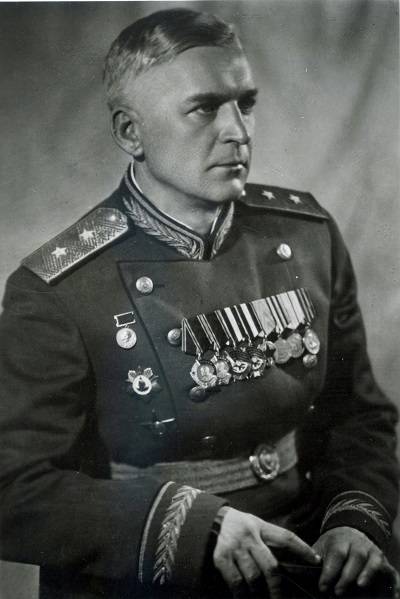
Head of the Main Military Chemical Department of the Red Army Vasily Aborenkov, 1945 year
The son of a retired cannoner of the Guards Mounted Artillery Brigade, he voluntarily enlisted in the Red Army in 1918 and gave her 30 years of his life. At the same time, the greatest merit of Vasily Aborenkov, who forever inscribed his name in Russian military history, was the appearance of the “Katyusha” in service with the Red Army. Vasily Aborenkov began active promotion of rocket artillery after 19 in May 1940, when he took the position of head of the jet armament department of the Main Artillery Directorate of the Red Army. It was on this post that he showed extraordinary stubbornness, risking even "jumping over the head" of his immediate superior, who had become arrested in the artillery views of the past head of the GAU, Marshal Grigory Kulik, and achieved attention to the new weapon from the country's top leadership. It was Aborenkov who was one of the organizers of the demonstration of jet mortars to the leaders of the USSR 15 and 17 in June 1941 of the year, which ended with the adoption of Katyusha.
As commander of the Guards mortar units, Vasily Aborenkov served until 29 on April 1943 of the year - that is, until the day that this post existed. Since April 30, the Katyushas have returned under the leadership of the commander-in-chief of artillery, and Aborenkov has remained in charge of the Main Military Chemical Department of the Red Army.
The first rocket artillery batteries were armed with howitzers
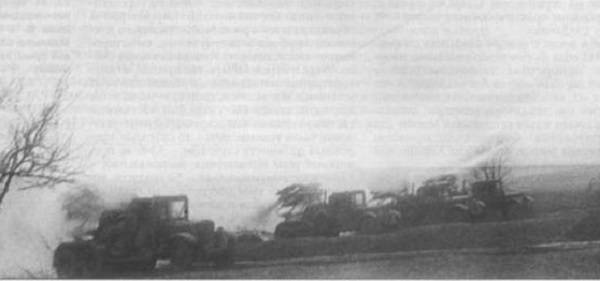
Battery BM-13 on the chassis of the car ZIS-6 shooting, spring 1942 of the year
In the view of most people who are not immersed in military history, "Katyusha" is in itself such a powerful weapon that their armed units do not need any other. In reality, this is far from the case. For example, according to the state of the Guards Mortar Regiment number 08 / 61, the approved People's Commissariat of Defense in August 8 1941 years, this unit apart from BM-13 37 plants had six-millimeter automatic anti-aircraft guns in service and 12,7 nine-millimeter anti-aircraft guns DSK. But there was also a small arms of personnel, which, say, a separate Guards Mortar Division of the state of November 11 1941, was supposed to be a lot: four DP machine guns, 15 submachine guns, 50 rifles and 68 pistols!
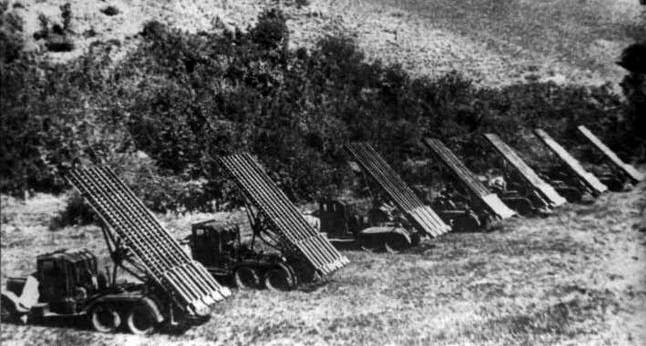
The BM-13 combat vehicle division on the chassis of the ZIS-6 vehicle is ready for a volley. Summer 1943 of the year
Although it is especially curious that the first separate experimental battery of field rocket artillery by captain Ivan Flerov included an 122-mm howitzer of the 1910 / 1930 model, which served as a sighting gun. To her relied ammunition in 100 shells - quite enough, given that the missiles for the BM-13 battery had six times more. And the most surprising thing is that the seven guns of the 210 caliber mm also appeared on the list of weapons of the battery of captain Flerov! Launchers for rockets passed under this column, while their chassis — ZIS-6 trucks — were recorded in the same document as “special machines”. It is clear that this was done for the sake of the same notorious secrecy, which for a long time surrounded Katyusha and their history, and eventually turned it into a myth.
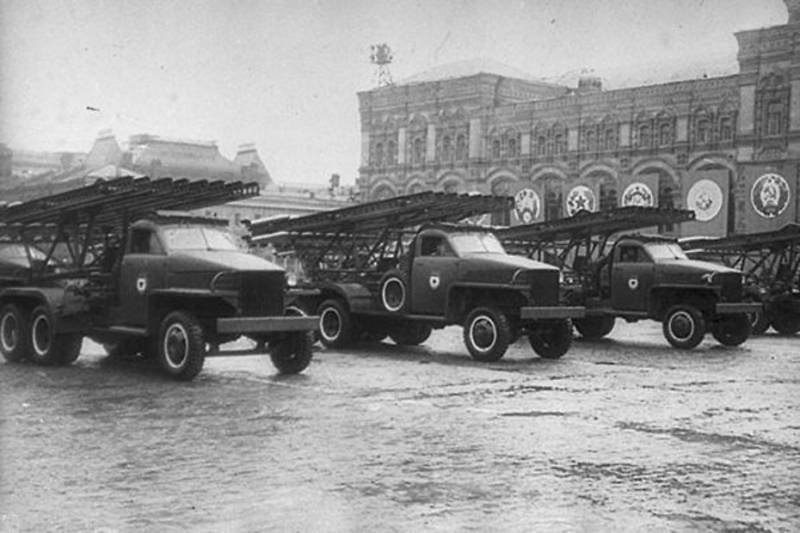
Information